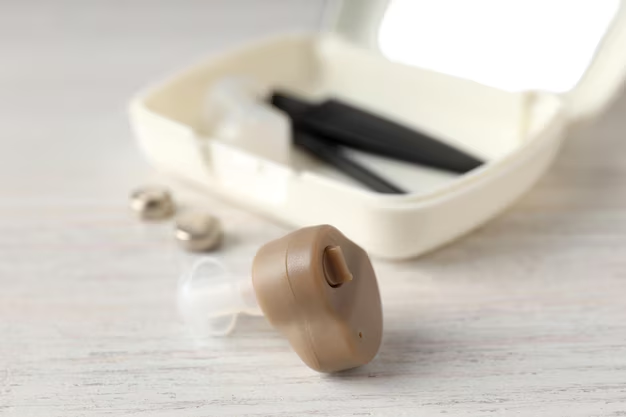How to Properly Dry Out Your Digital Hearing Aids Without Compromising Their Functionality
Digital hearing aids are integral devices that significantly enhance the quality of life for many individuals. However, like all electronic gadgets, they are vulnerable to moisture damage. Whether it's from accidental exposure to water or simply daily wear in humid conditions, knowing how to dry out your digital hearing aids efficiently is crucial for maintaining their performance and longevity. This comprehensive guide will explore practical methods for drying out digital hearing aids and offer essential tips to safeguard them against moisture-related issues.
Understanding the Impact of Moisture on Hearing Aids
Digital hearing aids consist of intricate electronic components that can be adversely affected by moisture. Exposure to water, sweat, or humidity can lead to corrosion, battery malfunction, and compromised sound quality. While hearing aids are designed to be somewhat resistant to moisture, prolonged exposure can cause irreversible damage. Understanding these risks helps in taking proactive measures to protect your investment.
Common Causes of Moisture Exposure
- Weather Conditions: Rain, humidity, and extreme temperatures can introduce moisture to hearing aids.
- Sweat: Active lifestyles or warm environments can cause perspiration, which may affect the functionality of the hearing aids.
- Accidental Splashes: Everyday activities, such as washing the face or swimming, might accidentally expose hearing aids to water.
Steps to Dry Out Digital Hearing Aids
When hearing aids are exposed to moisture, it's important to act quickly and effectively. Here are some essential steps you can take to restore your hearing aids to optimal working condition.
1. Immediate Actions Post-Exposure
Turn Off and Remove Batteries: Immediately turn off the device and remove the batteries to prevent further damage.
Blot with a Dry Cloth: Gently dab the hearing aids with a dry, soft cloth to remove excess moisture. Avoid rubbing, as this may push moisture deeper into the device.
2. Utilize a Hearing Aid Dryer or Dehumidifier
For a more thorough drying process, using a hearing aid dryer or dehumidifier is recommended. These devices are specially designed to remove moisture from hearing aids safely.
Electric Hearing Aid Dryers: These devices use gentle heat and a fan system to circulate air around the hearing aids, effectively drying them.
Desiccant-Based Dehumidifiers: These are more portable options that utilize moisture-absorbing beads to draw out moisture from hearing aids over time.
3. Create a Dry Environment
Store your hearing aids in a dry, cool place when not in use. A designated case or container with a moisture-absorbing silica gel packet can help maintain a dry environment.
Preventative Measures for Moisture Protection
While knowing how to dry out your hearing aids is crucial, implementing preventative measures can greatly reduce the risk of moisture exposure. Here are some strategies to consider:
Invest in Water-Resistant Hearing Aids
Some models offer enhanced resistance to moisture, making them ideal for individuals who frequently engage in activities with increased humidity or exposure to sweat.
Use Hearing Aid Covers or Sweatbands
Specially designed covers or sweatbands provide an additional layer of protection against moisture and are particularly useful for those with active lifestyles.
Implement a Daily Routine
Develop a routine of regularly cleaning and inspecting your hearing aids for signs of moisture. Utilizing a dehumidifier each night as part of this routine can help prevent issues before they arise.
Troubleshooting Moisture-Related Problems
Despite best efforts, moisture-related problems can sometimes occur. Recognizing early signs and knowing when to seek professional help is important for preventing further damage.
Signs of Moisture-Related Issues
- Distorted Sound Quality: If sound becomes muffled or distorted, moisture might have infiltrated the device.
- Intermittent Functioning: Hearing aids that stop working periodically could be experiencing moisture-related interruptions.
- Visible Corrosion: Corrosion around the battery compartment or other components is a clear indicator of moisture exposure.
When to Consult a Professional
If drying methods do not restore functionality or if problems persist, it may be time to consult a hearing aid professional. They can diagnose the issue and perform any necessary repairs or suggest appropriate replacements.
Quick Reference Guide: Essential Tips for Drying and Maintaining Hearing Aids
Here’s a handy summary with practical tips to keep your hearing aids functioning optimally:
🔍 Drying Tips:
- Immediate Action: Turn off and remove batteries; blot with a dry cloth.
- Use Dryers: Employ a hearing aid dryer or dehumidifier overnight for thorough moisture removal.
- Avoid Heat: Do not use hairdryers or microwaves; excessive heat can damage hearing aids.
🙂 Prevention Tips:
- Moisture Protection: Consider waterproof models or use protective covers during physical activities.
- Regular Maintenance: Clean and dry daily; use a dehumidifier to keep them moisture-free.
❗ Warning Signs:
- Check Functionality: Distorted sound or intermittent performance might indicate moisture issues.
- Seek Help: Professional consultation is advisable if problems persist.
Conclusion: Staying Vigilant Protects Your Investment
Moisture exposure is a common issue for digital hearing aids, but with the right strategies and timely actions, you can effectively manage and minimize potential damage. By implementing preventative measures and knowing how to respond to moisture exposure, you can ensure your hearing aids remain reliable and functional. Prioritizing the care and maintenance of your hearing technology isn't just about preserving a device—it's about maintaining the essentials of communication and quality of life. Always stay proactive, and remember that professional guidance is available if needed.

Related Topics
- a Plus Hearing Aid Centers
- a Real Pain Showtimes Near Centerville
- Are Airpods Bad For Your Ears
- Are Apple Second Generation Airpods Hearing Aids
- Are Audien Hearing Aids Just Amplifiers
- Are Costco Hearing Aids As Good As Others
- Are Costco Hearing Aids Good
- Are Hearing Aid Domes Interchangeable
- Are Hearing Aid Subscriptions Worth It
- Are Hearing Aid Tax Deductible